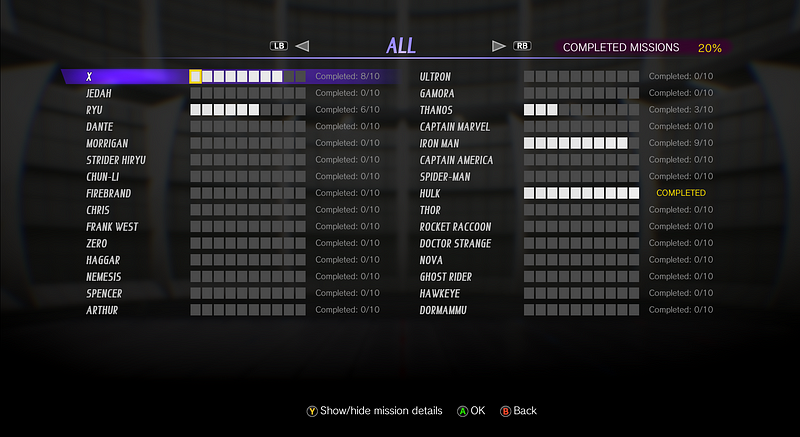Trending
Opinion: How will Project 2025 impact game developers?
The Heritage Foundation's manifesto for the possible next administration could do great harm to many, including large portions of the game development community.
Dedicated fighting game players will spend a lot of time in these Training and Mission modes, more so than in the relatively short Story Mode. The user experience for these should be as polished and well-thought-out.

Hello and welcome to Game Design Inspirations! GDI is a weekly bite-sized nugget of brilliant game design, taken from the games that I play “for research purposes”.

Last weekend, Capcom’s latest installment of its universe convergence fighting game released to generally positive reviews (after the requisite review bombs that come from disgruntled hardcore fans). The fighting game engine feels nostalgic and plays well, new characters have interesting mechanics, and the game has a delightful story mode that is filled with interactions between characters that fans from both universes will appreciate.
Ever since Street Fighter 2’s ending sequences, fighting games have always had stories serving to both flesh out the characters and as a reward for playing the game. Over the years, these stories have evolved from being just a few lines of text over short 30-second animations to epic cutscenes that wouldn’t be out of place in the latest Avengers movie.
Compare: The classic Ryu ending from Street Fighter 2 SNES, released in 1991…
Vs. Just one of the cutscenes in MvC: Infinite. Bring on the explosions!
Aside from the stories, another timeless element of fighting games is the need for players to practice their skills before facing off against real-life opponents. MvC: Infinite’s solution to this is Mission Mode, where players are shown and then asked to perform a specific character’s moves and combos.

Mission Mode does a better job of teaching a player how to play than the Training Mode, which is usually just having the player pause the game, look at a list of commands through the pause menu, and then switch back to the game and try to perform them. Mission Mode at least overlays the moves on the screen, and gives the player feedback when he does something successfully. The progress tracking on the character selection also gives some form of incentive.
While Mission Mode is suitable for practicing a character’s moves and learning how to use them in game, there’s still a lot of improvements that can be introduced to make the mode more compelling.
First, the difficulty progression from mission 1 to 10 isn’t very smooth. The missions start with just a simple special move but then suddenly becomes a carpal tunnel syndrome inducing combo on the 8th to 10th missions. There should be a way to break down these combo strings first into smaller strings, asking the player to perform them first, similar to how a dance instructor breaks down choreography.
One of the missions I’m not able to do. 2 hyper combos and 2 active switches, are you kidding?!
Also, other fighting games make use of f2p mechanics such as daily quests and grindable cosmetic items. Variations of these mechanics can be added to the Challenge Mode to give players an additional extrinsic motivation to come back.
Finally, recent fighting games already have the option of recording and downloading fight replays from the Internet. There may be a way to use this data in the Training and Challenge modes to help players learn more effectively.
Dedicated fighting game players will spend a lot of time in these Training and Mission modes, more so than in the relatively short Story Mode. The user experience for these should be as polished and well-thought-out.
Today’s Moment of Zen:
“The path to enlightenment stretches far beyond the reach of even these arms.” — Dhalsim
Thank you for reading! Follow Game Design Inspirations on Medium for weekly and past GDIs.
Read more about:
BlogsYou May Also Like